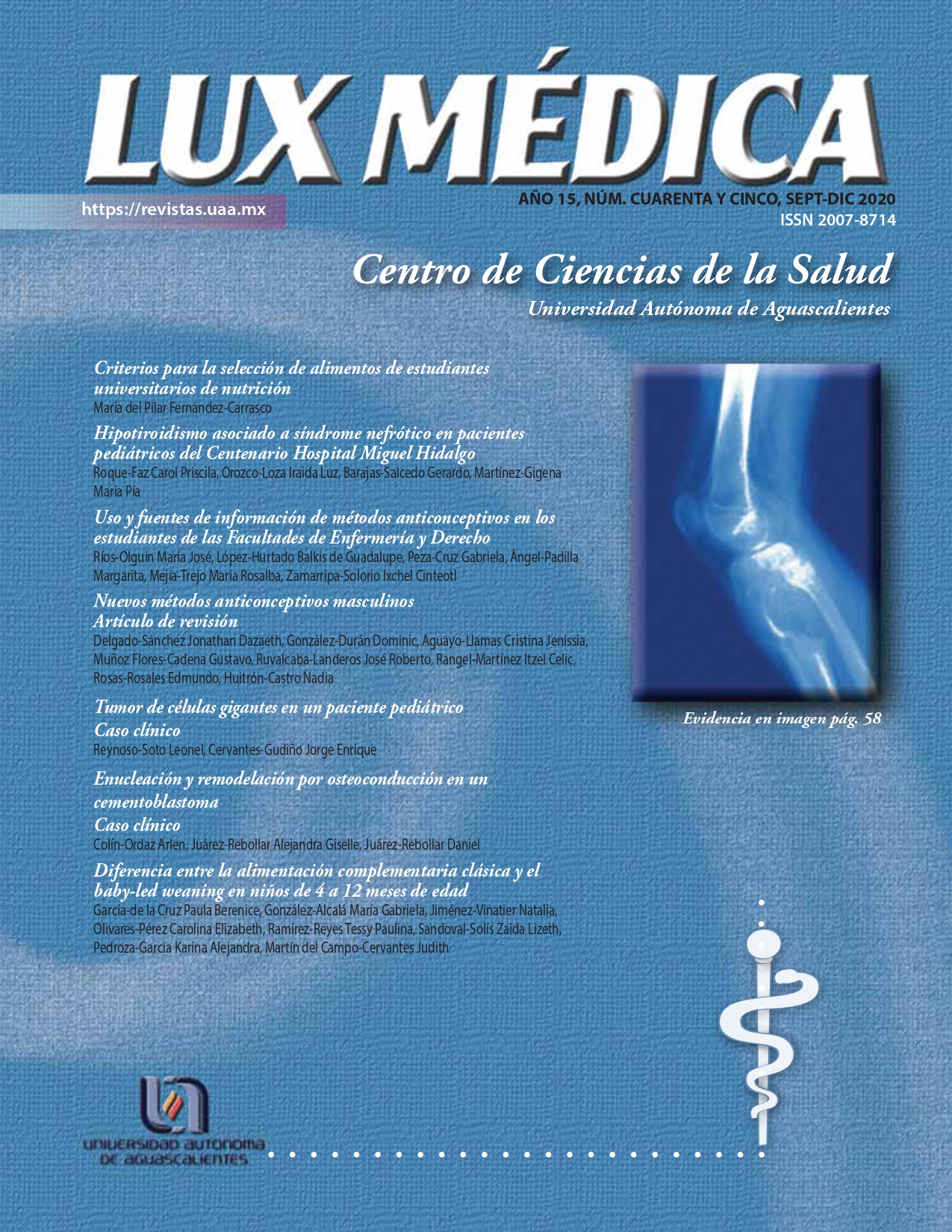Diferencia entre la alimentación complementaria clásica y el baby-led weaning en niños de 4 a 12 meses de edad
DOI:
https://doi.org/10.33064/45lm20202873Abstract
The proper introduction of food is important in the health and growth of the infant. Currently, different techniques can be followed, such as Baby-Led Weaning (BLW), which, unlike the classic complementary feeding technique, is selfregulated by the infant. The Offlcial Mexican Norm NOM- 043-SSA2-2012, Basic Health Services. Promotion and education for health in food matters establishes the criteria to be followed for a correct introduction of food. Objective: To compare the weight and length in infants who followed classical complementary feeding and BLW, as well as anthropometric indices. Methods: This is a descriptive, comparative, and longitudinal study carried out in 26 infants divided into two groups; the flrst followed the classical complementary feeding technique and the second the BLW technique. Three monthly measurements of weight and height were made to compare and evaluate the anthropometric indices weight/ length (W/L), weight/age (W/A), and length/age (L/A). Results: No signiflcant differences were found when comparing the anthropometric indices of both feeding techniques; therefore, both methods are recommended. Conclusions: rurther studies are recommended with a larger sample, considering other variables such as psychomotor development. LUXMÉDICA AÑO 15, NÚMERO 45, SEPTIEMBRE-DICIEMBRE 2020, PP 73-80.
Downloads
Downloads
Published
How to Cite
Issue
Section
License
La revista Lux Médica está bajo una licencia de Creative Commons Reconocimiento-NoComercial-Compartir Igual 4.0 Internacional.












